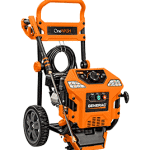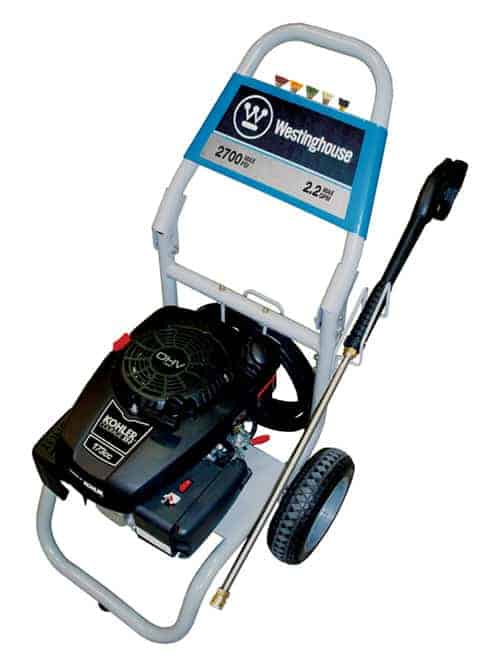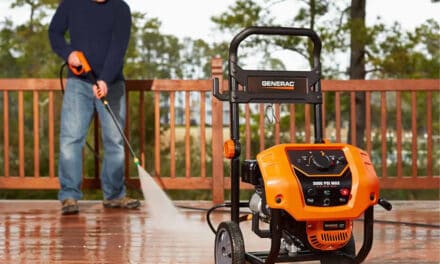Pressure washers include a set up nozzles that install at the end of the wand or lance. They come in various colors to identify the nozzle’s spray angle. Norwall carries residential, and commercial and industrial pressure washers from Generac and Westinghouse.
The nozzle’s angle determines the spray angle. A narrow angle concentrates more pressure in a small area, while a wide angle spreads the pressure out. Nozzle orifice diameters are matched to the unit’s pump. A nozzle designed for a lower pressure machine can increase pump pressure on a more powerful model and damage the pump.
Safety First: A pressure washer is not a toy. The spray is potentially dangerous and even light-duty residential pressure washers can inject water directly into the skin, a serious injury. As pressure and volume increases, so does the potential for injury. Always wear safety glasses while using a pressure washer and never point the spray at yourself or another person.
Black Soap Nozzle
The soap nozzle is also called a chemical injector tip. It has a larger orifice that reduces pump pressure. The lower pressure activates the siphon tube, which pulls soap or chemicals into the water stream.

The new OneWash™ from Generac. It’s four power washers in one. The OneWash features the largest, most powerful engine in its class.
Lower pressure makes spreading soap or chemicals on the surface easy. Manufacturers supply cleaning solutions for various surfaces and materials in formulations that won’t damage the pump or pressure washer. Using household cleaners that contain bleach, ammonia, or other chemicals may result in damage and expensive repairs. Only use chemicals or soaps made for use in pressure washers, and only on surface types specified on the label. The use of household chemicals may void the unit’s warranty.
Red: Zero Degree
This tip produces a solid stream of water that can damage soft materials such as wood. The pencil-like water stream concentrates all of the water pressure onto a single point.
Uses include removing grass from sidewalk or driveway cracks, cleaning lawnmowers, or removing stains from brick, concrete, or metal. It handles thick mud and makes cleaning rototiller tines a breeze.
Generally not for use on house siding or other easily damaged surfaces. If you could throw a small stone and dent the surface, then avoid using the red tip.
Yellow: Fifteen Degree
The yellow tip is like a chisel, and is sometimes called a chisel tip. When the spray is applied at an angle to the surface, it peels paints, mold, and mildew from the surface much like a paint scraper would. Applying the spray at an angle allows it to get under the paint and break its bond with the underlying surface material.
This tip is good for stripping paint or other finishes or any other tough cleaning job. Avoid using on painted surfaces unless you want to strip the paint. This nozzle is excellent for general cleaning on metal, concrete or masonry surfaces. Use care on wood―the spray could damage it or strip away paint, even if the spray is not applied at an angle.
Green: Twenty-Five Degree
One of the most commonly used cleaning tips, the green tip produces a 25-degree spray that handles most cleaning jobs. After soap is applied, the green tip completes the job by breaking the bond between the dirt and the surface. The wide spray angle makes covering large areas easy and fast.
This tip is excellent for general cleaning. It removes dirt from houses, patios, walkways and other surfaces.
White: Forty Degree
With a forty-degree spray and a slightly larger orifice, this tip produces a lower pressure spray for cleaning cars, fiberglass boats, patio furniture, and rinsing soap from glass and wooden surfaces. It’s a good follow up tip to use after brightening and cleaning your deck.
This tip makes final rinsing a breeze and won’t damage most surfaces. It’s not the best tip for cleaning stubborn stains on concrete or brick, but it will do a great job cleaning dirty wood, vinyl, or aluminum siding.
Shop Power Washers











